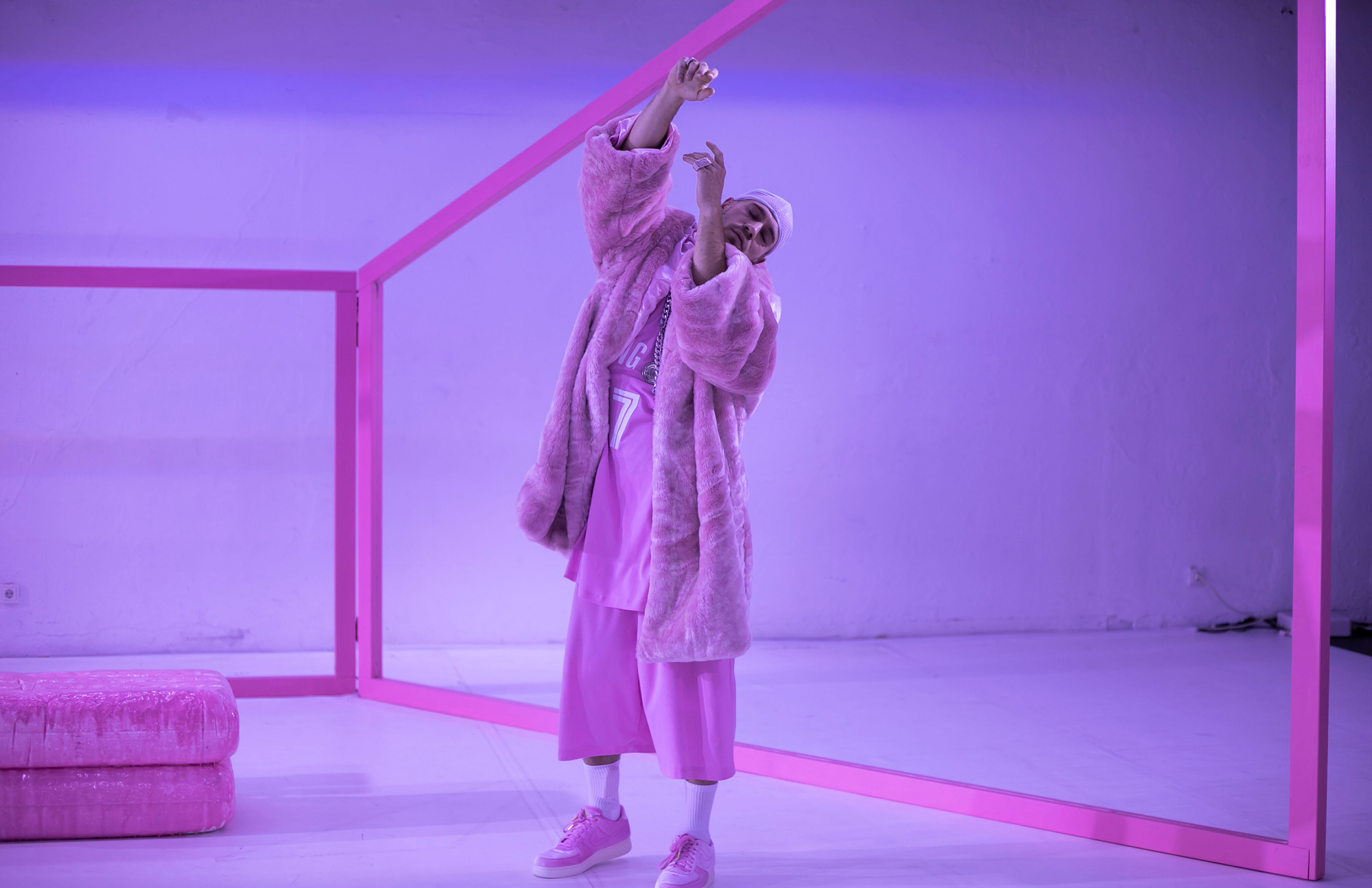


In the 2002 music video for Hey Ma, rapper Cam’ron donned a pink velour tracksuit, complete with matching durag and accessories. Previously steeped in performative hypermasculinity, the world of US rap was now presenting itself as soft, plush, and pink. This trend quickly reached the catwalks of major European cities, as Afro-American rappers, who were seen as the racialized epitomes of heterosexuality, hypermasculinity, and aggression, had proven that the otherwise “feminine” color choices couldn’t harm their image.
BEING PINK AIN'T EASY takes this episode in media history as the starting point for a choreographic solo that reveals the fragility and power mechanisms underlying the construction of whiteness.
In the introductory chapter of Everything But the Burden – What White People Are Taking from Black Culture (2003), Greg Tate addresses the unequal cultural exchange underway between Black artists and white appropriation. He also explains hip hop as an aesthetic by-product of America’s Hollywood dream machine, consumer capitalism, and its subliminal seductions. In the anthology’s following chapter, Carl Hancock Rux argues that the archetype of the White N***a or Wigga is part of a long tradition that goes back to white US-American and European avant-garde artists of the 1920s and 1930s. The performance of white Blackness can be understood as a contemporary form of minstrelsy. (1)
The music and embodiment of Black artists seem up for grabs as consumable concepts for the construction of a white self. Capitalist marketing logics transform Black aesthetics into a performative mask available for anyone to wear—and just as easily discard when necessary.
BEING PINK AIN'T EASY sheds light on the seemingly insatiable white desire for Black forms of expression. The construction of skin color, which has established whiteness as a powerful and unmarked symbol, is exposed within this structure of desire. The stage character, the White N***a, undergoes a hyper-marking: unable to cast off his pinkness, his performance becomes a prime example of the codification of violence and power in white bodies.
CHOREOGRAPHY Joana Tischkau
PERFORMANCE Rudi Natterer SOUND & COMPOSITION Frieder Blume DRAMATURGY & CO-DIRECTION Nuray Demir, Ellias Hampe COSTUME Nadine Bakota SET Inga Danysz LIGHT Juri Rendler GRAPHIC DESIGN Justus Gelberg ARTISTIC PRODUCTION MANAGEMENT Lisa Gehring PHOTOS Meklit Fekadu, Justus Gelberg, Dorothea Tuch
2019
(1) See Greg Tate (editor), „Everything but the Burden: What White People Are Taking from Black Culture" (New York, NY: Harlem Moon [u.a.], 2003), 21ff.
A production by Joana Tischkau in co-production with Sophiensæle, Münchner Kammerspiele and Künstler*innenhaus Mousonturm as part of the Tanzplattform Rhein-Main. The Tanzplattform Rhein-Main, a project of Künstler*innenhaus Mousonturm and the Hessisches Staatsballett is made possible by the Kulturfonds Frankfurt RheinMain and supported by the Kulturamt der Stadt Frankfurt am Main, the Hessen State Ministry for Higher Education, Research and the Arts and the Stiftungsallianz [Aventis Foundation, BHF BANK Stiftung, Crespo Foundation, Dr. Marschner-Stiftung, Stiftung Polytechnische Gesellschaft Frankfurt am Main]. Supported by the Cultural Office of the City of Frankfurt. Supported by the NATIONALE PERFORMANCE NETZ Koproduktionsförderung Tanz, supported by the Federal Government Commissioner for Culture and the Media.